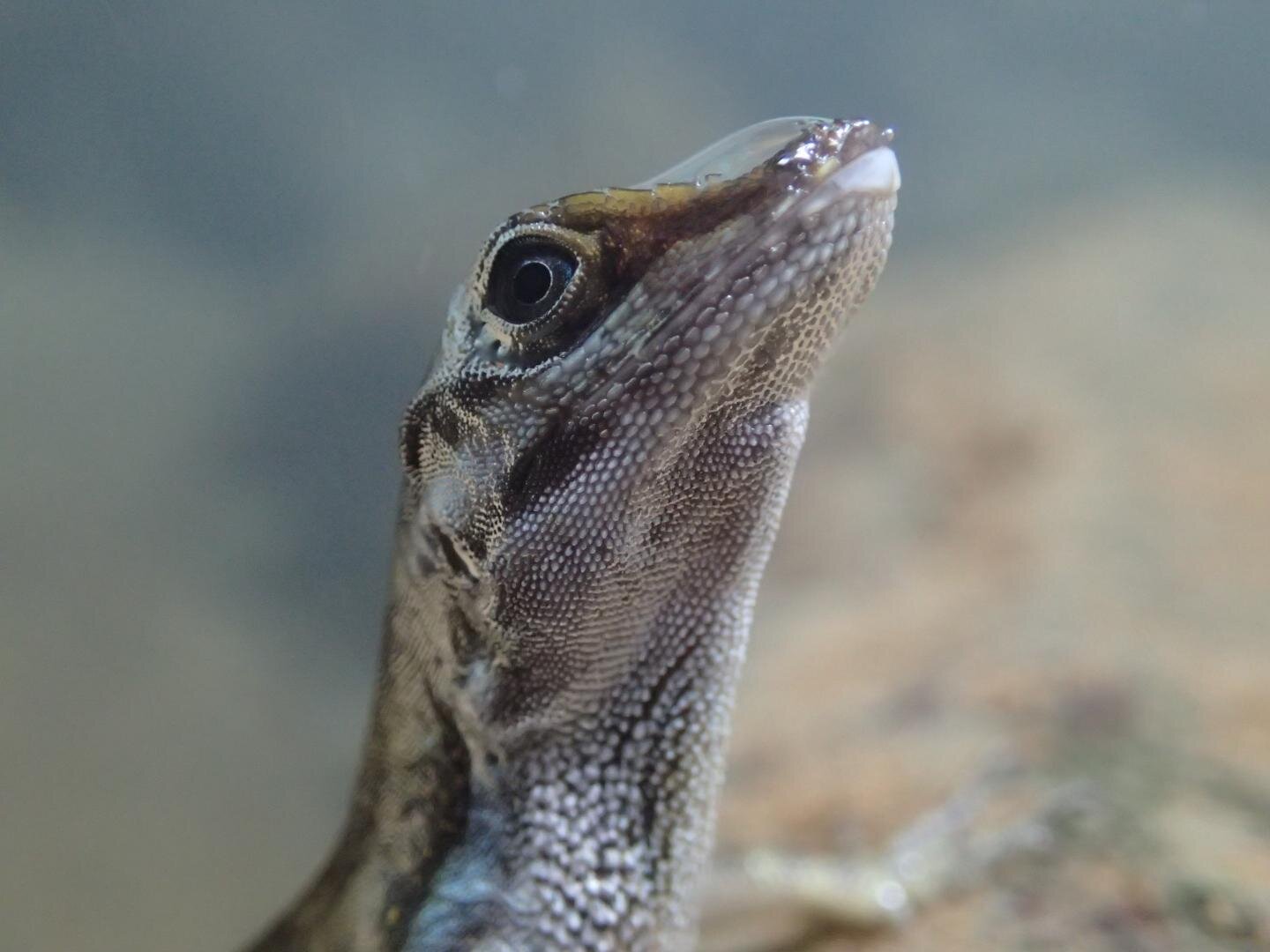
These lizards can breathe underwater thanks to air bubbles trapped on their skin
An anol with rebreathing bubbles on its snout. Credit: Lindsey Swierk.Anolis lizards are semi-aquatic creatures spanning the islands of the Caribbean, as well as Central and northern South America. They’re sometimes called chameleons by locals for their ability to change color from green to brown and vice versa. However, that’s not their most impressive feature. Anoles can stay submerged underwater for as long as 18 minutes, during their frequent dives in order to escape predators. A new study has now uncovered the biological mechanism that enables this remarkable ability.“We found that semi-aquatic anoles exhale air into a bubble that clings to their skin,” says Chris Boccia, who recently graduated from a Masters of Science program at the University of Toronto’s Department of Ecology & Evolutionary Biology (EEB) and is the lead author of the new study that appeared this week in Current Biology. “The lizards then re-inhale the air,” he added, “a maneuver we’ve termed ‘rebreathing’ after the scuba-diving technology.”Boccia and colleagues closely studied six species of semi-aquatic anoles out of more than 400 known species. All six species possessed this remarkable rebreathing trait despite most of them were distantly related. This suggests that the trait is rather ancestral and was passed down across the lineage because it increased the lizards’ chances of eluding predators. The anoles periodically inflate the oxygen-rich bubbles that cling to their heads, then draw them back into their nostrils. Boccia says that the bubbles function like a “rebreathing device”, similar to the one used by divers to extend their time underwater by recycling exhaled air, which contains some unused oxygen. “Rebreathing had never been considered as a potential natural mechanism for underwater respiration in vertebrates,” says Luke Mahler, Boccia’s thesis supervisor. “But our work shows that this is possible and that anoles have deployed this strategy repeatedly in species that use aquatic habitats.”A submerged Anolis lizard with a rebreathing bubble on its snout. Credit: Lindsey SwierkKey to this rebreathing trait is the anoles’ hydrophobic (water-repelling) skin, which likely evolved to protect the lizards from rain and parasites. When underwater, the hydrophobic skin traps air bubbles on the lizard’s snout, acting like a scuba tank. This ability had been witnessed previously in water beetles. Besides providing oxygen, the bubbles may extend time underwater by helping remove the carbon dioxide from exhaled air. The greenhouse gas is highly soluble in water, and since the levels of carbon dioxide in the bubbles are higher than the surrounding water, the gas is dissolved into the surrounding water rather than being re-inhaled.What’s more, when swimming in well-oxygenated streams, the bubbles clinging to the lizards’ snout may also act as a gill, absorbing oxygen from the water via diffusion. “It’s too early to tell if lizard rebreathing will lead to any particular human innovations,” says Boccia, “But biomimicry of rebreathing may be an interesting proposition for several fieldsincluding scuba-diving rebreathing technology, which motivated our naming of this phenomenon.”
……Read full article on ZME Science
Animals
Comments
Leave a comment in Nestia App